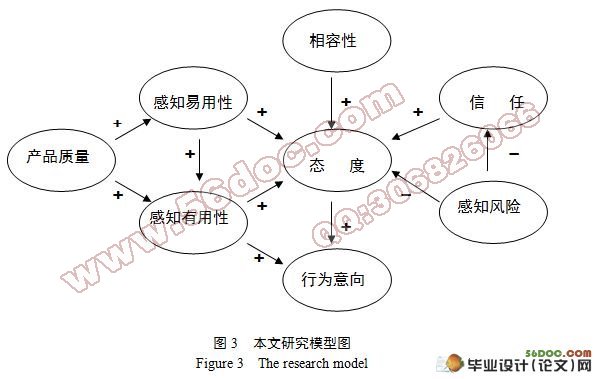数字产品的消费者购买行为分析-基于大学生调查数据(附调查问卷)
来源:wenku163.com 资料编号:WK1639444 资料等级:★★★★★ %E8%B5%84%E6%96%99%E7%BC%96%E5%8F%B7%EF%BC%9AWK1639444
资料介绍
数字产品的消费者购买行为分析-基于大学生调查数据(附调查问卷)(18000字)
摘 要:随着电子商务和网络技术的发展,消费者对数字产品的需求越来越强烈。许多消费者认可并购买数字产品,影响消费者购买数字产品的因素越来越复杂。怎样建立一个消费者满意的数字产品显得尤为重要。本文通过对大学生进行意愿调查,在市场调查的基础上, 结合学校所学理论知识,以TAM模型为基础,针对大学生购买数字产品行为进行分析,研究这些消费群体对数字产品的消费行为,探讨数字产品的发展前景及趋势,以获得有效的营销管理模式,寻找扩大数字产品消费的途径与对策。
关键词:数字产品;消费者;购买行为;调查分析
Analysis of Digital Products Consumer Purchase Behavior
——Based on the Investigation Data of College Students
Abstract: As e-commerce and networking technology developing, the consumer’s demand of digital products growing stronger and stronger. Many consumers accept and purchase digital products, the factors influence consumers of buying a digital product tend to be more and more complex. How to establish a consumer-satisfied digital products seems particularly important. The investigation conducted by the students’ will, on the basis of market survey and theories, anglicizing university students’ digital product purchase behaviors with TAM model. Researching the consumer groups of digital products behaviors, discussing about digital product development prospects and the tendency to gain effective marketing management pattern and the expansion of consumption of digital products and countermeasures.
Key words: Digital products;Consumers;Purchasing behavior;Investigation and analysiy

目 录
摘 要……………………………………………………………………………1
关键词……………………………………………………………………………1
一、绪 论……………………………………………………………………………2
(一)研究背景…………………………………………………………………2
(二)研究目的…………………………………………………………………2
(三)研究意义…………………………………………………………………3
(四)研究思路与方法…………………………………………………………3
二、文献综述………………………………………………………………………3
(一)数字产品概念和分类……………………………………………………3
(二)消费者购买数字产品行为模型…………………………………………4
1消费者购买决策与行为模型…………………………………………4
2 TAM模型概述…………………………………………………………4
3创新扩散理论…………………………………………………………5
三、理论模型构建…………………………………………………………………5
(一)TAM和ID整合模型……………………………………………………6
(二)研究变量及定义…………………………………………………………6
(三)研究假设及模型…………………………………………………………7
1研究假设………………………………………………………………7
2构建模型…………………………………………………………7
(四)问卷调查研究设计……………………………………………………8
1问卷的设计步骤………………………………………………………8
四、实证研究…………………………………………………………………10
(一)样本情况………………………………………………………………10
(二)信度分析………………………………………………………………10
(三)描述性统计分析………………………………………………………12
(四)相关分析………………………………………………………………13
(五)回归分析………………………………………………………………14
1态度回归分析…………………………………………………………14
2感知有用性回归分析…………………………………………………15
3感知易用性回归分析…………………………………………………16
4信任回归分析…………………………………………………………16
5行为意向回归分析……………………………………………………17
(六)结果分析及模型修正………………………………………………17
1结果分析……………………………………………………………17
2模型修正………………………………………………………………18
五、研究结论与建议………………………………………………………………18
(一)研究结论………………………………………………………………18
(二)营销建议………………………………………………………………20
(三)研究局限与展望………………………………………………………21
参考文献…………………………………………………………………………22
致谢………………………………………………………………………………24
附录1 调查问卷…………………………………………………………………24
|



